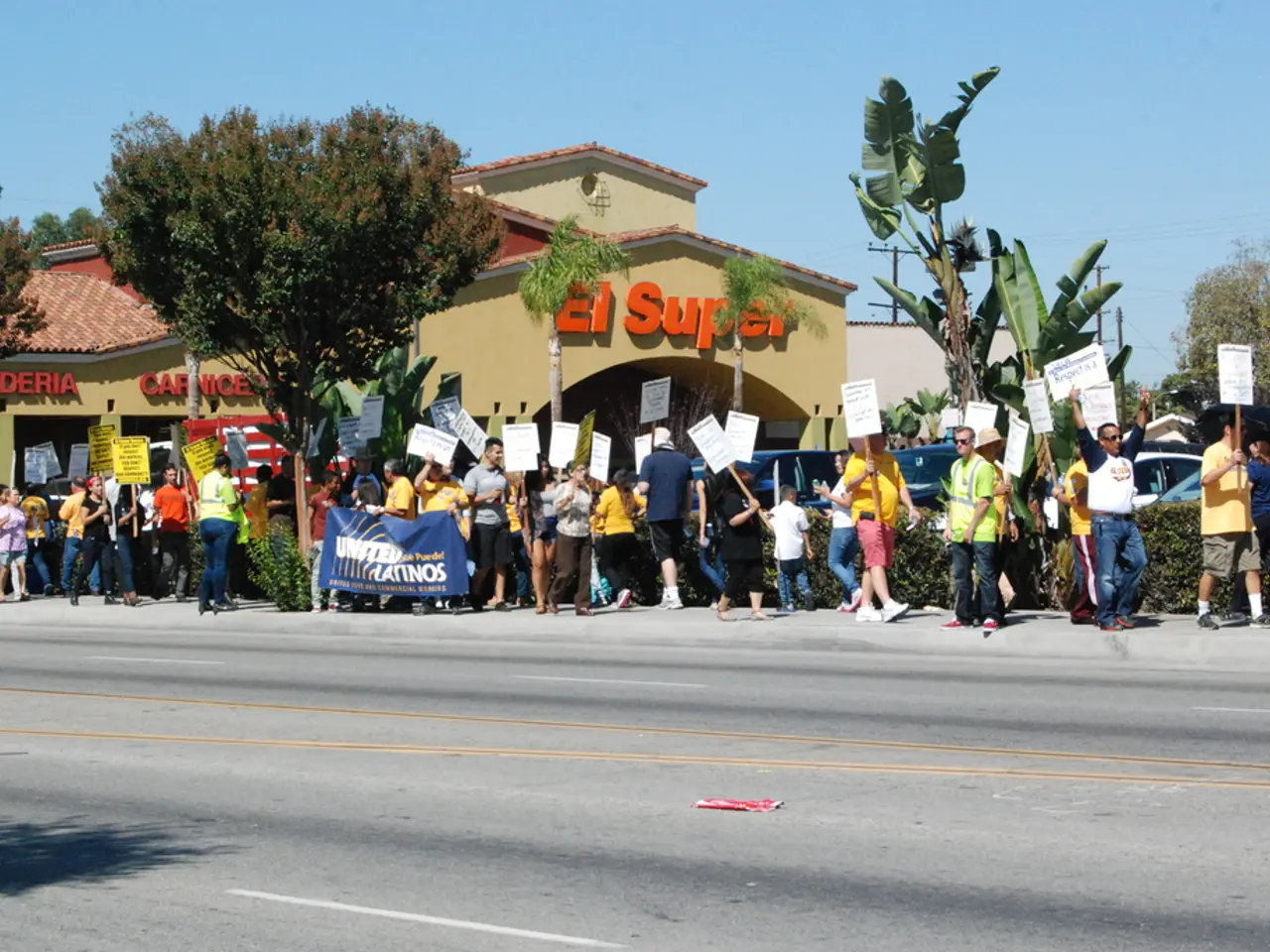Utilizing Social Monitoring to Enhance Growth for Your Political Faction
In the digital age, social media has become a powerful tool for political parties to connect with voters, understand their concerns, and shape their messaging. One key strategy is social media listening, a method of tracking, analysing, and interpreting social network data to gain valuable insights.
Effective political strategies employ real-time monitoring and sentiment analysis across multiple platforms to identify emerging public concerns, voter attitudes, and early signals of policy discussions. This proactive approach allows parties to respond quickly, tailor messages, and engage authentically with voters.
Key tactics for utilising social media listening include:
- Utilising AI-powered social listening tools to detect early signals of policy and public sentiment shifts across platforms like Twitter, Truth Social, and Bluesky. This helps anticipate issues before they gain media prominence or legislative action.
- Integrating social listening insights into campaign workflows to align messaging with voter concerns and legislative trends, enhancing the party's relevance and responsiveness.
- Engaging with voters where they are on social media by consistently posting, responding authentically, and using platforms like TikTok, Instagram, and Facebook to expand reach and deepen voter connection.
- Combining social listening with traditional outreach, such as door-to-door canvassing and phone banking, to directly address specific issues identified through online conversations, strengthening grassroots support.
- Crafting tailored messages based on analytics from social media insights to frame campaign narratives that resonate with target voters and highlight the party's strengths in addressing key issues.
- Animating online communities and mobilizing activists by leveraging the interactive features of social media, turning passive followers into active campaigners.
- Monitoring opponents’ social media strategies and public reactions to adapt quickly and maintain a competitive edge in digital campaigning.
As social media listening evolves, the future holds promising advancements such as AI-powered emotion recognition, real-time voter heatmaps, automated trend detection, and deeper integration with campaign decision systems.
Insights from social listening encompass sentiment analysis, issue-based concerns, voter demands, misinformation patterns, regional trends, and feedback on candidates. Political parties can use hashtag analysis to measure campaign reach, identify trending topics, analyse competitor narratives, and fine-tune digital strategies.
Commonly used social listening tools include Brandwatch, Sprout Social, Meltwater, Talkwalker, Hootsuite Insights, and native platform analytics. Social listening helps detect controversies or criticism early, allowing parties to address issues proactively before they escalate into larger PR problems.
In the realm of politics, social listening helps political parties understand voter concerns, track reputation, identify influencers, detect crises early, and refine messaging based on real-time public feedback. Multilingual sentiment analysis is essential to capture regional voices across languages like Hindi, Tamil, Telugu, and Bengali in India.
However, challenges in political social listening include data overload, sarcasm detection, bot traffic, misinformation, and managing multilingual and context-sensitive analysis. Despite these challenges, social media listening offers a wealth of information about what people are saying or not saying, and will continue to play a crucial role in shaping political campaigns in the digital era.
- Political parties frequently employ AI-powered analytics to detect early shifts in public sentiment and policy discussions across various social media platforms like Twitter, Truth Social, and Bluesky.
- Effective email campaigns can benefit from integrating insights gained through social media listening, aligning messaging with voter concerns and legislative trends to increase relevance and responsiveness.
- Beyond social media, politicians can use social listening to understand their reputation, identify influencers, and track crises early in general-news outlets and blogs.
- Social media listening tools such as Brandwatch, Sprout Social, Meltwater, Talkwalker, Hootsuite Insights, and native platform analytics provide valuable data to help political parties adapt their digital strategies.
- Utilizing sentiment analysis can help politicians respond proactively to controversies or criticism, preserving their reputation and maintaining a competitive edge in their social media presence.
- In the entertainment industry, social media analytics can assist in shaping narratives that resonate with target audiences, similar to how political parties tailor their messaging for effective campaigns.







